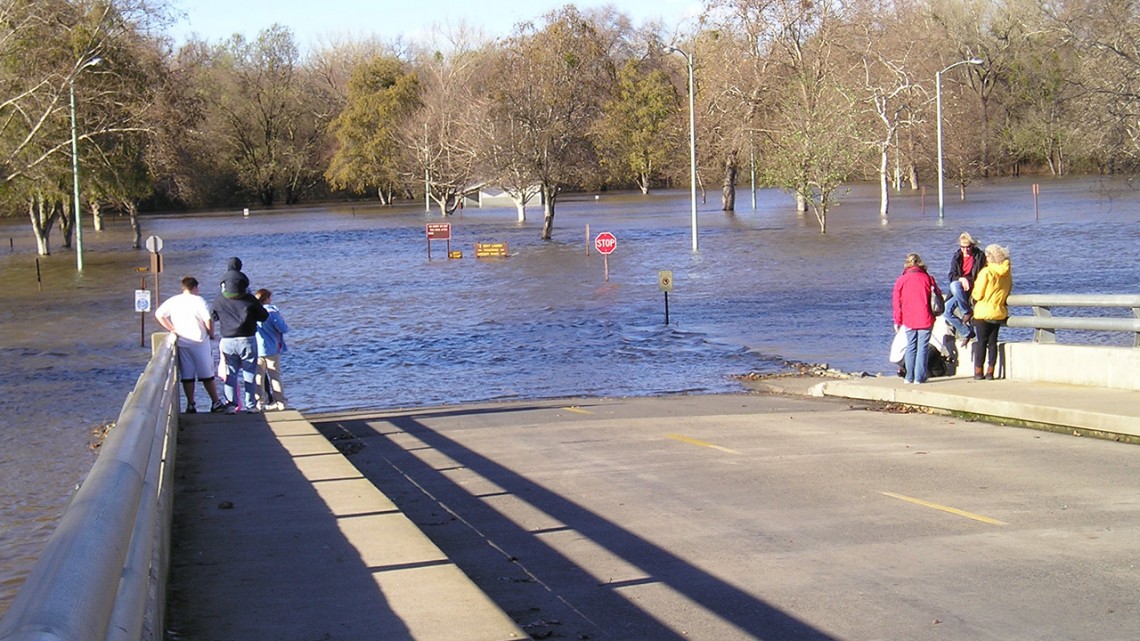
Discovery Park, Sacramento, California at the confluence of the Sacramento and the American rivers, can easily flood.
Cornellians pitch in to update federal flood guide
By Blaine Friedlander
For the last 40 years, the U.S. Geological Survey’s “Guidelines for Determining Flood Flow Frequency” – known as Bulletin 17A and 17B – has supported planning and construction that has reduced injuries, death and property damage from flooding in the United States.
The influential guide helps municipalities, state lawmakers and federal emergency-management agencies design infrastructure and regulate flood-prone areas – and now it has been updated once more as Bulletin 17C. It presents useful algorithms, analysis of uncertainties and hydrologic wisdom that reflect over 35 years of effort by federal hydrologists and Cornellians from the School of Civil and Environmental Engineering.
“Writing the new guidelines has been a challenging task that began in earnest in 2005. We’ve cleaned up statistical methods and procedures. The profession is becoming more serious about uncertainty and flood statistics, which Bulletin 17C facilitates,” said Jery Stedinger, the Dwight C. Baum Professor in Engineering and a fellow in Cornell’s Atkinson Center for a Sustainable Future.
“We thought we could complete an improved Bulletin 17B in less than five years, but writing guidelines that work reliably everywhere in the U.S. was a bigger task than we realized,” he said.
The bulletin’s eight authors include Stedinger, and three hydrologists who earned their doctorates with him: Beth A. Faber, Ph.D. ’99; Andrea G. Veilleux ’06, M.S. ’09, Ph.D. ’11; and the late Timothy A. Cohn, M.A. ’84, Ph.D. ’86.
Other Cornell alumni whose graduate research with Stedinger made important contributions to the guide include: Richard M. Vogel, Ph.D. ’85; Veronica Griffis Webster, M.S. ’03, Ph.D. ’06; Jonathan R. Lamontagne, M.S. ’14, Ph.D. ’15; and Xin Yu, Ph.D. ’17. Notable contributions were made with the theses of Ming-Hui Jin, M.S. ’88, and Rafiq Surani, M.S. ’90.
Stedinger gives special credit to Cohn, who died last year. Critical changes adopted in Bulletin 17C originated with ideas advanced in Cohn’s masters and doctoral research and then developed further over his three decades as a U.S. Geological Survey hydrologist, Stedinger said. Over the 12-year process of creating Bulletin 17C, the professor explained that Cohn was key to initiating the project, developing improvements in the methods when needed, and shepherding the new guidelines though the evaluation process.
“With Tim Cohn’s thesis work in the mid-1980s, it was clear how the guidelines should evolve,” Stedinger said. “I was extremely fortunate to have very bright, capable and energetic students who were willing take up the challenge to develop better methods.”
Each year, torrential rain, storm surge and broken levees create floods that wash away roads, bridges, automobiles and houses. For civil engineers, estimating flood-frequency relationships is key to floodplain management that seeks to guide protection of lives and domestic infrastructure.
The Geological Survey published flood frequency guidelines first in 1967 as Bulletin No. 15. The guide was updated and extended in 1976 as Bulletin 17 and revised a year later as Bulletin 17A. The last update was published as Bulletin 17B in 1982; it addressed new techniques and incorporated better statistical methods than those in Bulletin 17A.
The new 2018 guidelines update the description of flood data to allow better representation of uncertainty when needed; present a new expected-moments algorithm; affirm a generalized approach to identification of low outliers – small observations that may have an inappropriately large influence on estimated flood risk; and present an improved method for computing confidence intervals for the T-year-flood.
Simultaneous development of methods recommended in Bulletin 17C for using regional hydrologic information to estimate the shape of the flood flow-probability relationship came out of doctoral theses by Charles N. Kroll, Ph.D. ‘96; Eduardo Sávio P.R. Martins, Ph.D. ’01; Dirceu Silveira Reis, Jr, Ph.D. ’06; as well as contributions by Lamontagne and Webster. The work culminated in Veilleux’s graduate theses, which produced statistical algorithms that are used in regional hydrologic analyses today.
Sometimes a student build on the work of a previous student, sometimes students consider different issues and sometimes they collaborate.
Said Stedinger: “My students and I are lucky to have been able to collaborate with one another and with hydrologists at federal agencies and universities, to produce these improved methods, which have now been officially adopted and will be used around the world.”
Media Contact
Get Cornell news delivered right to your inbox.
Subscribe
